I decided to make a separate topic about my quest into making the canbus in my car work. I don’t think there will be a lot of people who will swap a 3SZ from a Sirion 2/Boon into an L7 (unless you feel like crying once in a while), but swapping the K3 from the same model will probably give you similar problems. In that case, it’s nice to have a topic like this to help you out.
Before we start:
- I haven’t actually solved the issue yet, but when I do, I’ll put “FINISHED” or “SOLVED” or something like that in the title.
- No, I’m not going for a standalone ECU
- I’m also not going to use an older K3 ECU. I’d rather make this work properly
- If you have any useful info or special knowledge, please reply to my other topic
- Unlike my other topics, I’m just going to update and edit this post, instead of posting an update in a “reply”. Hopefully, in the end, I can turn this topic into a guide on how to solve the issue.
THE CANBUS ISSUE
I’ll start with a bit of background info, and then work my way through all the info I’ve gathered so far.
3SZ SWAP
In the summer of 2021, I swapped a 3SZ into my Cuore L7. At first I didn’t have the right key to ‘unlock the immobilizer’, but after I got that sorted out… a T-piece on the upper coolant hose exploded. But after sorting that out, the fuel filler hose kind of blew itself off, which resulted in me fueling up the ground. But, after sorting that out, there was a weird noise coming from the gearbox so we had to take everything out again. But that really was the last major issue (you can see where this is going). Although the car drove fine, the gauge cluster was lit with warning lights: brake warning, ABS, and a check engine light.
CANBUS
I used my OBDII scanner, which didn’t work at all. My first encounter with canbus: the DLC connector needs to be connected to HCAN and LCAN on the ECU. If it’s not, the OBDII scanner won’t work.
After running a pair of twisted wires from the DLC connector to the ECU, I was able to read the fault codes.
Which, ironically, told me there was an issue with the canbus (code U1000). I figured “well, it sucks that the CEL is always on, but at least it’s nothing major”. Or so I thought. In the following weeks, I didn’t really drive all that far, until I visited a some friends, about 90km’s away. FYI: I use my bicycle for daily commute and most other occasions, because I don’t have to leave the city that often. So a driving “far” to me is like 30+ minutes on the highway. Moving on.
Driving back home didn’t go so well…
So that’s were my quest began.
That speed signal should come from the ABS ECU through, you guessed it, canbus.
From the ABS ECU (on the left), up-and-over (because it’s a manual), through the gauge cluster, to the (EFI) ECU.
ABS ECU
When I did the swap, I basically made the 3SZ work with the wiring harness I took from a YRV 1.3, which actually works quite well! However, that also meant using the ABS ECU from the YRV, which doesn’t incorporate canbus. I bought the 3SZ with a bunch of parts, including the ABS unit the car came with. I took out all the pins/wires that were fitted to the YRV’s ABS plug, and put them in the plug for the ‘new’ ABS unit (they have the same type of plug). One thing that I was struggling with during the ‘plugswap’ to fit the new ABS unit, was that I just couldn’t find the right page in the workshop manual.
The plug had three rows, but the manual showed just two.
It took some time to figure it out, but somehow I stumbled upon the answer when I was looking at second hand Sirion 2’s. The thing I noticed, was that all 3SZ Sirions had VSC (Vehicle Stability Control). In fact, only 3SZ Sirions had VSC. That’s why I couldn’t find it in this manual. It only covers the 1KR-FE and K3-VE.
For 3SZ-related stuff I used the Materia M4 manual. At first I wasn’t able to find it (because most Daihatsu manuals have a different layout), but, at last…
There it is!
After finding this, it was just a matter of putting all the pins in the right place.
Fortunately, the ABS unit seemed to work like it should (because it made a noise, so I suppose that’s a good thing), unfortunately, it didn’t solve the big problem.
I went to the junkyard (again) and got the ABS unit from a Sirion 2 1.3 (K3). As shown above, this unit didn’t have VSC, and the less complicated a part/system is, the less there is to mess up.
CANBUS BASICS
Although I haven’t fitted the new ABS unit yet, I just couldn’t wrap my head around the system. I was at a dead end, so I decided to learn more about canbus, starting with the basics
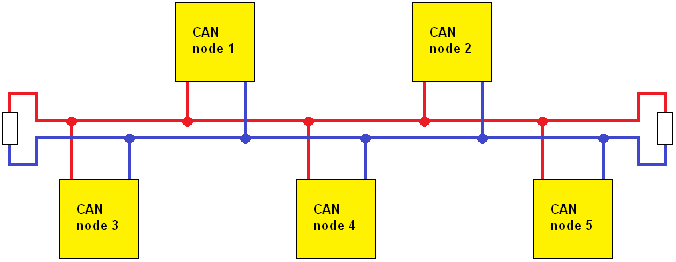
Picture it like a main road with two lanes, CAN high (red) and CAN low (blue), and smaller side roads (the nodes). The ABS unit is an example of a node, in this case. The white boxes on both ends are resistors (120 Ohm, for example), and are crucial for the system to function properly. Signals can bounce back within the bus, if there are no resistors. If you really want to understand how the system works, I suggest you watch a few video’s on YouTube, because it’s a bit more complex than just this picture. However, it was enough for me to wonder “where are those resistors?”. I couldn’t find anything about separate resistors, so I figured they had to be incorporated into one of the ‘canbus participants’.
I almost felt stupid when I figured it out, because I’ve used the same diagrams for many many many wiring harness related issues, but never noticed how the canbus itself is pictured in the diagram, including the resistors. But oh well, we learn as we go. I’m glad I figured it out in the end.
On the left you can see the main bus, with its nodes on the right
The two resistors are incorporated into the ECU and the ‘combination meter assembly’ (aka the gauge cluster). I don’t have the gauge cluster, and I think that’s the reason why my canbus doesn’t work.
That’s pretty much where I am now, and I’m going to find a way to either get a gauge cluster and see if that works, or see if I can make it work by using just a resistor. Once I’m done, I will update this topic and make a proper “how-to”.
UPDATE 1 - 12
I measured the resistance between CANH and CANL on the ABS plug, which was 124 Ohms (let’s say 120) . For me, this confirms that there is indeed one of two resistors missing.
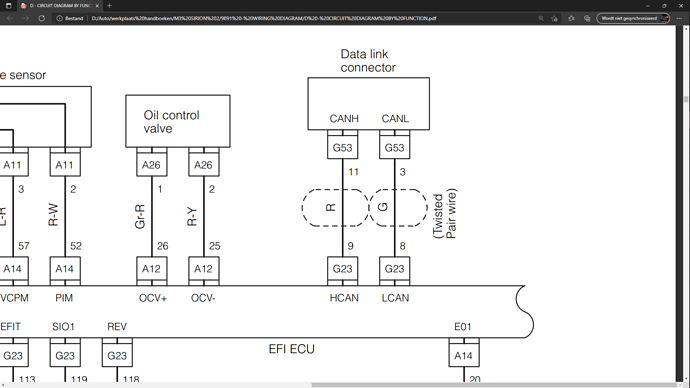

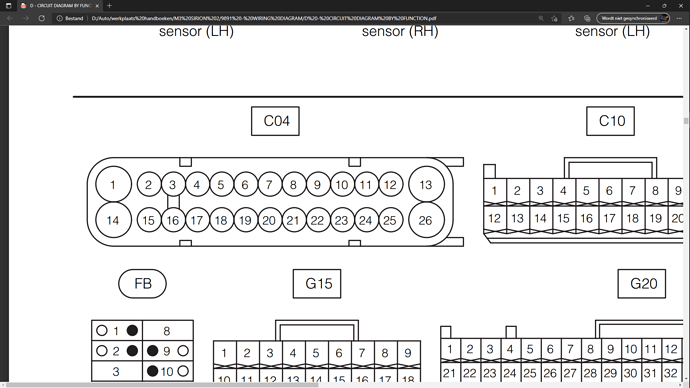
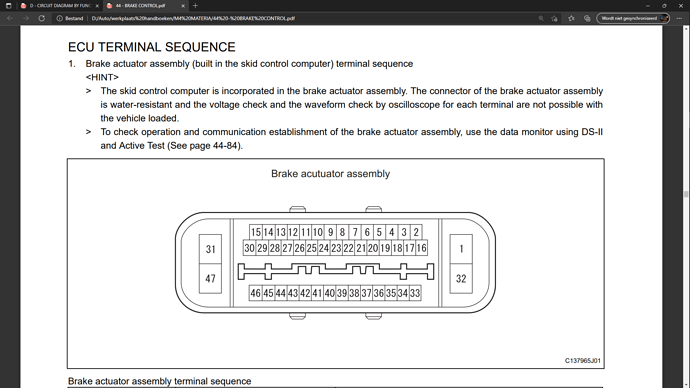
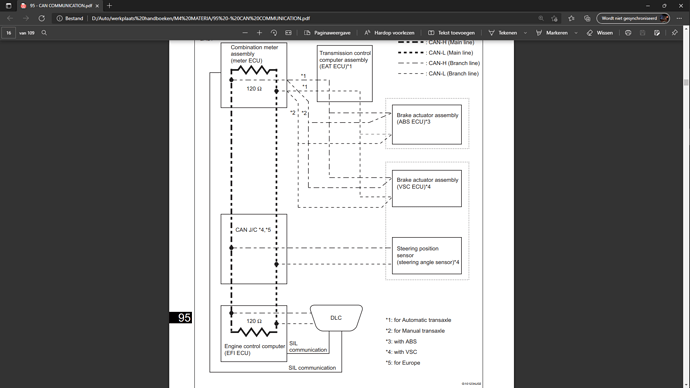

 .
.